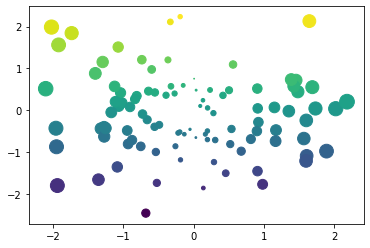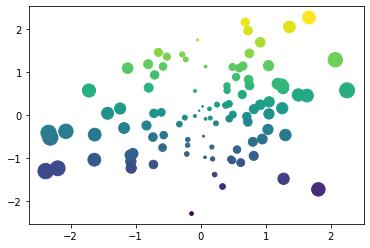It's possible to control which cells show up in your final book pages. For example, you may want to display a complex visualization to illustrate an idea, but don't want the page to be cluttered with a large code cell that generated the viz. In other cases, you may want to remove a code cell entirely.
In this case, you have two options:
- Hiding the inputs of a code cell will hide the cell's contents and provide a button that lets readers reveal the content.
- Removing the inputs (or the entire cell) will prevent the contents from
making it into your book's HTML. It will be entirely gone (though still present in
the
.ipynbfile)
In both cases, Jupyter Books uses notebook cell tags to determine which code cells to hide. To make this process easier to manage, we recommend the JupyterLab Cell Tags extension
Hiding page elements and displaying a button to show them
You can hide most cell elements of a page. The sections below describe how to hide each.
If an element is hidden, Jupyter Book will display a small button to the right of the old location for the hidden element. If a user clicks the button, the element will be displayed.
Hiding inputs
If you add the tag hide_input to a cell, then Jupyter Book will hide the cell but
display the outputs.
Here's an example of cell metadata that would trigger the "hide code" behavior:
{
"tags": [
"hide_input",
]
}
For example, see the cell below contains the hide_input tag:
import numpy as np
import matplotlib.pyplot as plt
plt.ion()
data = np.random.randn(2, 100)
fig, ax = plt.subplots()
ax.scatter(*data, c=data[1], s=100*np.abs(data[0]));
Note how we only see the output by default. Now try clicking the button to the right of the empty spot above!
# This cell should have its output hidden!
data = np.random.randn(2, 100)
fig, ax = plt.subplots()
ax.scatter(*data, c=data[1], s=100*np.abs(data[0]));
Hiding markdown cells
Finally, you can also hide markdown cells in your page. This is useful if you'd like to provide some extra information to readers that want to dig deeper, but you don't want to clutter the page with too much information. To do so, add the following tag to your markdown cell:
{
"tags": [
"hide_input",
]
}
For example, this cell should be hidden!
# This cell should have its output hidden!
data = np.random.randn(2, 100)
fig, ax = plt.subplots()
ax.scatter(*data, c=data[1], s=100*np.abs(data[0]));
Removing inputs from the HTML
In the above examples, we are only hiding the inputs, with the option that readers can reveal them if they wish. However, if you'd like to completely remove the inputs, so that their contents do not make it into the book's HTML, you may use the following tag:
To remove the inputs of a cell:
{
"tags": [
"remove_input",
]
}
The following cell demonstrates removing inputs. Note that in this case, there is no button available to show the input contents, the entire input cell is gone!
Removing an entire cell
You can also remove both the inputs and outputs of a cell, in which case it won't show up in your book at all. These cells remain in the notebook file itself, so they'll show up if readers click on a JupyterHub or Binder link from a page.
To remove both the inputs and outputs of a cell, add the tag remove_cell to the tags
of the cell. Here's an example of cell metadata that would trigger the "remove cell" behavior:
{
"tags": [
"remove_cell",
]
}
These cells will be entirely removed from each book page - remember that if you'd like to
optionally display the inputs of a cell instead, you should use the hide_input tag.
For example, there's a cell below this one that won't make it into the final book, because it has been removed!
Removing markdown cells
Sometimes, you have extra Markdown in your documents that isn't meant for the reader. For example, if you want to organize your notebook based on developer-relevant information (like "# Import packages") but you don't want the reader to see this.
In this case, you can use the remove_cell pattern described above as well.
Here's an example of markdown cell metadata that would trigger the "hide text" behavior:
{
"tags": [
"remove_cell",
]
}
For example, in the notebook for this page there are two cells above this one. One cell with whitespace, and another cell with a few line-breaks. Both are gone in the final output.




